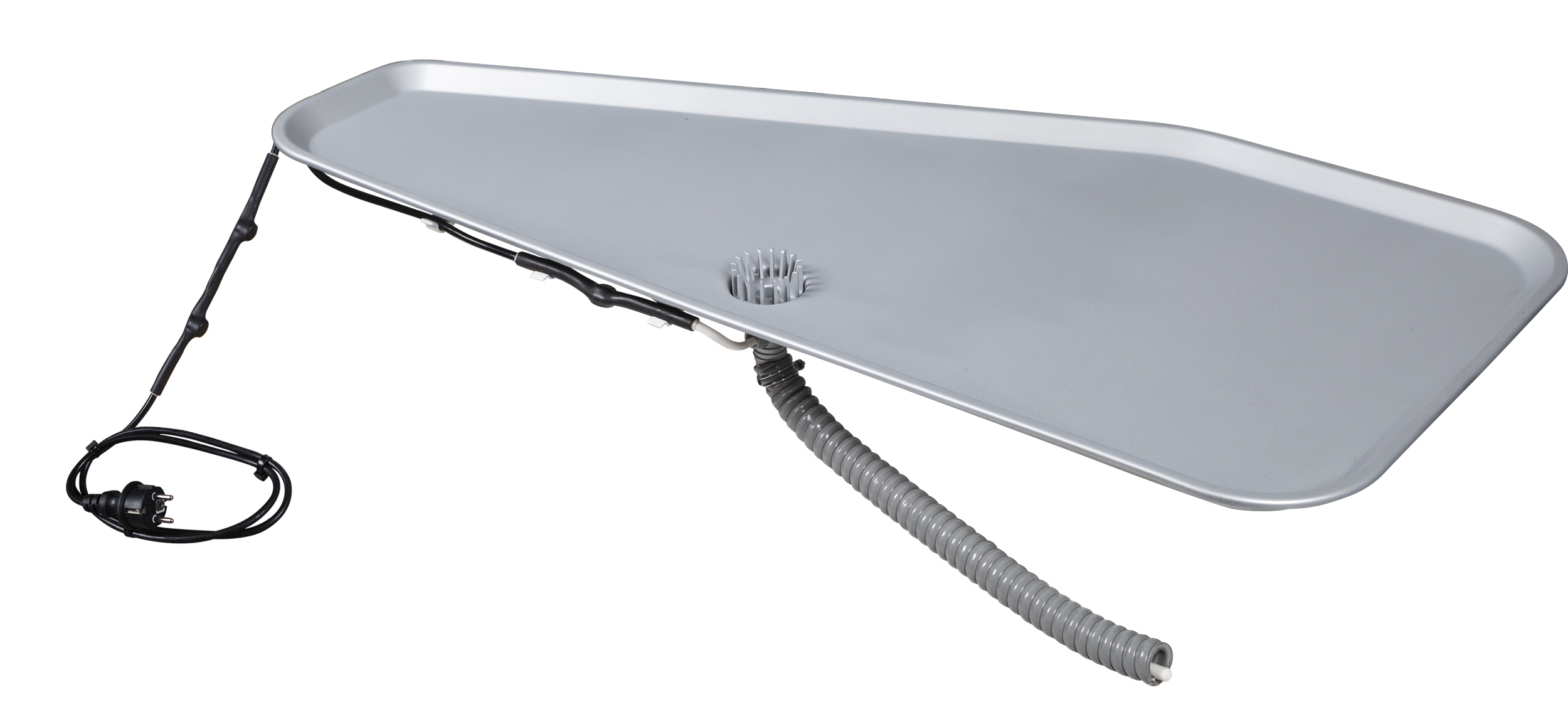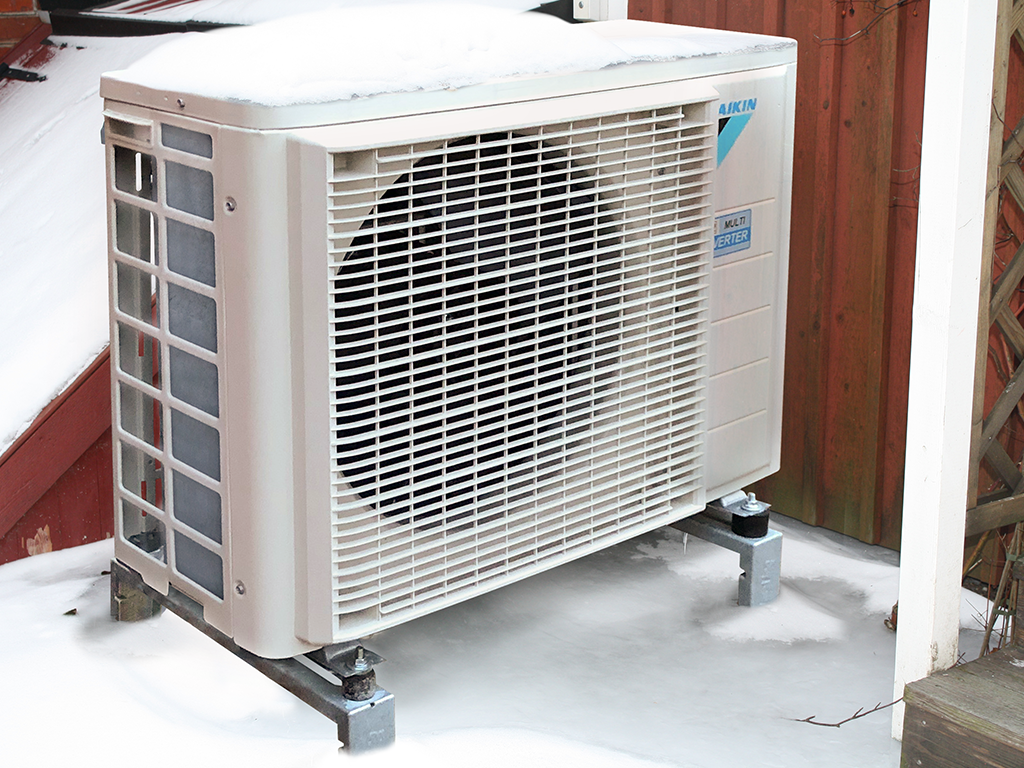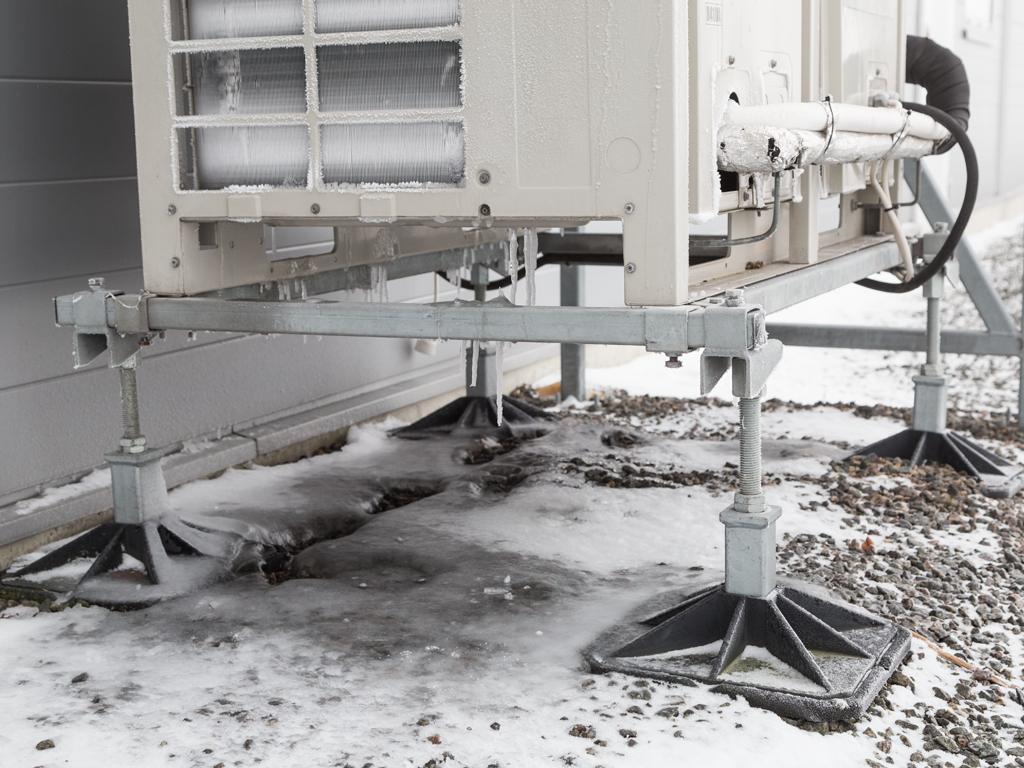
Do you require a drainage tray?
All heat pumps that obtain energy from the air (for example air-air heat pumps and air-water heat pumps) must melt the ice that forms on the outdoor parts of the heat exchanger in order to be able to work properly. Ice is formed at temperatures below +10° C and the amount is affected by the humidity in the air and how efficient your heat pump is. The ice is melted between 35 to 40 times per day, approximately every 35 minutes of operation.
The more efficient your pump is, the more water there will be – so be glad! This also means that the heat pump is saving you more money. In recent years pumps are much more efficient than just 10 years ago.
But isn't the water absorbed by the ground? The problem is frost. Another is basements. Or a pedestrian walkway past the outdoor unit.
Ground frost
There is ground frost in many parts of the country during winter, and this hinders the absorption of water by the ground. If you have an air-air heat pump or an air-water heat pump, the amount of water produced could be up to 60 liters per day. If it is not drained away then it is not uncommon for condensation water to pose a major problem, for the property, the heat pump and the residents.
Basements
If the house is well drained, then 20-60 liters of water per day at the same place might not be a problem. However, for many basements this could be the beginning of water damage with a number of subsequent problems. If you drain off the water then you avoid any possible negative effects.
Walkways or carports
It is not easy to maintain a walkway, sidewalk or carport during winter. Things are worse if water pours onto it from an outdoor unit 30 times a day. It is, of course, your responsibility as a property owner to ensure that no one gets hurt.
Ice forming under the outdoor unit
As you can see from the picture below, ice formation happens quickly. It is not uncommon for the water produced by condensation to become a major problem for the heat pump if it is not drained off.
Air-air heat pumps
An air-air heat pump produces between 20-30 liters of water per day. This amounts to a bathtubful in just a week.
The small Daikin in the picture on the side had to be turned off for a month when it was most needed. A Pancake 1 with 3m water drainage system attached with the water being drained off to the storm drains.

Air-water heat pumps
An air-water heat pump defrosts about 1-2 liters of condensed water per defrost. Defrosting intervals differ between models – but can be as many as 35 times per day.
The Fujitsu in the picture is a few years old, but it still produces almost 120 liters during a weekend. The first winter would have gone badly if the ice forming had not been removed every week. In 2015, a PRO 791 Eco heat tray was fitted with a 6m water drainage kit and the water was drained to a French drain.

Heat pumps for larger properties
Really large air-water heat pumps are becoming more common for terraced houses or smaller apartment buildings. A good solution, not only in comparison to fossil fuels but also in comparison to district heating. Plan the installation with our PRO heat tray to avoid having to make a call-out in the fall when the amount of water produced per day approaches 100 liters.
Daikin, 20Kw, installed in southern Sweden, see picture, produces on average 55 liters of condensation, between October and March. A Pro 1230 with a slightly bigger drainage kit would fit perfectly here.

Drain off the condensation!
It is equally important to drain the water from the heat tray or outdoor unit to a storm water drain, or a well in the basement. It is always easier if your heat pump installer installs this during installation.



